Products with a Geographical Indication (GI) are valuable to a country. Recognition grants a government the right to produce and sell a product or service, paving the way for increased wealth and prestige. In Bangladesh, the Department of Patents, Designs, and Trademarks handles GI certification and accreditation. Jamdani’s GI certification on November 17, 2016, was a watershed moment in the country’s GI registration procedure.
Products with characteristics that can only be found in a certain area of a nation owing to factors like its soil, water, weather, unique technological abilities, or deep cultural roots are awarded GI status. Eleven items from Bangladesh have been awarded GI status because of their unique characteristics. And the process of acknowledging many others is already underway.
An overview of 11 Bangladeshi GI products:
Table of Contents
Jamdani Sari as Geographical Indication

For ages, people in and around Dhaka have been weaving Jamdani on the banks of the Shitalakhya River. Bengal formerly earned substantial foreign revenue and international renown through the export of Jamdani to nations all over the globe. Demand is strong across the United States and abroad. The temperature in that region, the quality of the yarns, and the skill of the craftspeople all play a role in Jamdani’s creation. Bengali ladies have always had a soft spot in their hearts for Dhakai Jamdani. With this in mind, in October 2015, BSCIC submitted an application for Geographical Indication status for Jamdani. Jamdani was the first in the nation to get GI status in November 2016.
Jamdani Sari is made from fine cotton or silk threads and is known for its intricate floral and geometric patterns. The patterns are woven into the fabric using a special technique called “jamdani”. Jamdani Sari is typically woven in white, but it can also be found in other colours, such as red, green, and yellow.
Jamdani Sari is a popular choice for special occasions, such as weddings and festivals. It is also worn by women of all ages and from all walks of life. The GI status of Jamdani Sari is important because it helps to protect the livelihoods of weavers and artisans in Bangladesh. It also helps to ensure that consumers are purchasing authentic Jamdani Sari products.
Dhakai Muslin

Bengal formerly exported the world’s most expensive cloth, which helped make the name of the country more well-known among the upper classes of other countries. It was missing for a while, but the government’s efforts in recent years have helped bring it back. Bangladesh Handloom Board applied for GI status for Dhakai Muslin in 2020, and they were successful.
Dhakai Muslin is a fine, sheer cotton cloth that is hand-woven in the city of Dhaka, Bangladesh. It is one of the most expensive fabrics in the world and is known for its soft feel and complicated patterns. Dhakai Muslin was first made in the 13th century, and kings and rulers used to be very proud of it.
Dhakai Muslin is made from a special kind of cotton that grows in Bangladesh’s Gangetic Delta. Hands are used to spin and weave the cotton on a loom. It can take up to six months to make a single piece of Dhakai Muslin because the weaving process is so complicated and time-consuming.
Dhakai Muslin is known for its special traits, such as how light, soft, and long-lasting it is. It is also known for its complex patterns, which are often based on things found in nature. Dhakai Muslin is used to make skirts, kurtas, and wraps, among other things.
In 2013, Dhakai Muslin was named a Geographical Indication (GI). This means that Dhakai Muslin can only be called Dhakai Muslin if it is made in Dhaka, Bangladesh. The GI standing helps protect the quality and image of Dhakai Muslin, and it also helps the region’s economy grow.
Bangladesh has a lot to gain from Dhakai Muslin, both in terms of culture and money. It’s a sign of Bangladesh’s long history of making textiles, and it’s a big part of the country’s income.
Rajshahi Silk

When it comes to shine and sophistication, nothing compares to Rajshahi Silk. It has an optimal capacity for air absorption and moisture retention. This is why silk dresses are so convenient for all four seasons. Once upon a time, Rajshahi silk yarns and textiles were sent all throughout Europe and Asia, including to major cities like Basra, Mecca, and Jeddah. Around 1901, Europeans settled in Rajshahi and opened up three silk factories in the neighbourhoods of Sarada, Kajala, and Shiroil. In 2021, Rajshahi Silk received GI classification thanks to the efforts of the Bangladesh Silk Development Board. This means that Rajshahi silk can only be produced and sold under the Rajshahi Silk GI mark. This helps to protect the quality and reputation of Rajshahi silk, and it also helps to ensure that consumers are getting a genuine product.
Rajshahi silk is a type of silk that is produced in the Rajshahi region of Bangladesh. It is known for its high quality and unique lustre. Rajshahi silk is used to make a variety of products, including sarees, kurtas, and other traditional Bangladeshi garments. It is also exported to other countries around the world.
The GI status of Rajshahi silk has had several positive impacts on the silk industry in Rajshahi. It has helped to increase the demand for Rajshahi silk, and it has also helped to improve the livelihoods of silk weavers in the region.
Here are some of the key features of Rajshahi silk:
- It is made from the cocoons of the mulberry silkworm.
- It is known for its high quality, unique lustre, and soft texture.
- It is used to make a variety of products, including sarees, kurtas, and other traditional Bangladeshi garments.
- It is also exported to other countries around the world.
- It has Geographical Indication (GI) status, which means that it can only be produced and sold under the Rajshahi Silk GI mark.
Rajshahi silk is a valuable product that reflects the rich culture and heritage of Bangladesh. It is also a sustainable product, as it is made from a renewable resource.
Shatranji of Rangpur
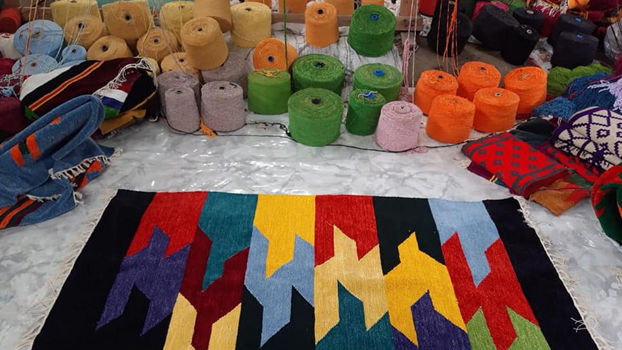
For hundreds of years, weavers in the city of Rangpur have been creating a unique kind of carpet known as a Shatranji. Floor mats, wall mats, wallets, door mats, prayer mats, and school bags are just some of the many goods that enterprising individuals are producing to meet consumer demand. In 2019, BSCIC applied for the GI rights to Shatranji, and by 2021, it was officially recognized.
Shatranji carpets are known for their unique geometric designs and vibrant colours. They are made using a variety of materials, including cotton, wool, and jute. The weaving process is intricate and time-consuming, and each carpet is a unique work of art.
Shatranji carpets are used for a variety of purposes, including floor coverings, wall hangings, and tablecloths. They are also popular as souvenirs and gifts. The GI recognition of Shatranji of Rangpur is a significant achievement for the weavers of the region. It will help to protect the authenticity and integrity of the product, and it will also promote its global recognition and value. The GI status will also help to support the livelihoods of the weavers and their families. It will also promote the cultural heritage of the Rangpur region.
Shatranji of Rangpur is a valuable asset to Bangladesh, and the GI recognition is a welcome development. It is hoped that this will help to further promote the product and support the weavers of the region.
Kalijira Rice as GI Product
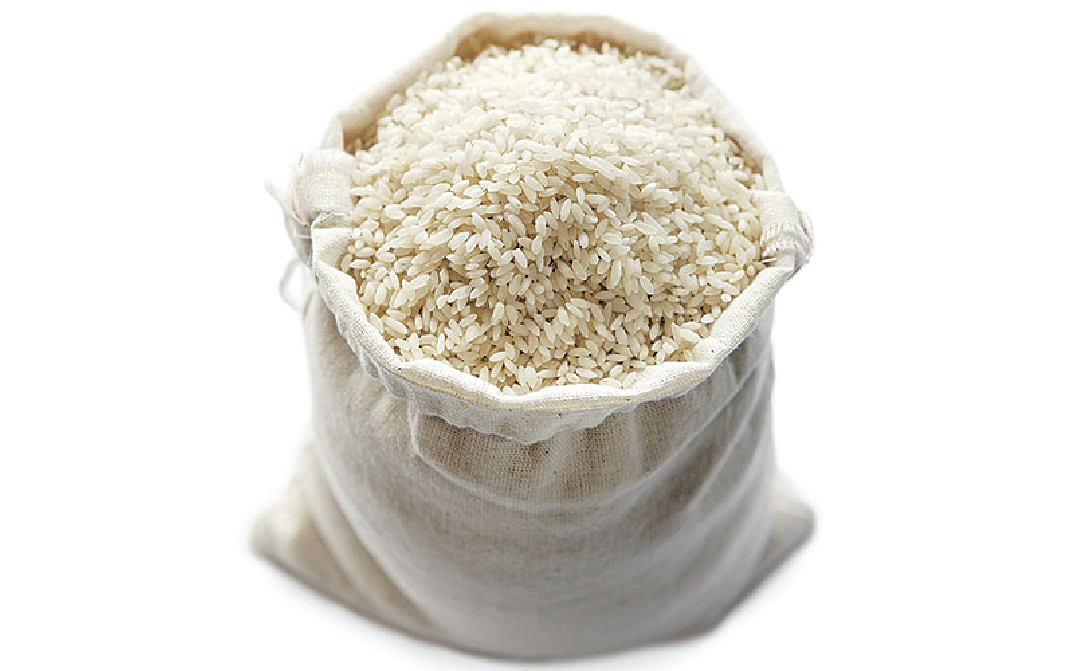
The aromatic, flavorful, and uniquely Bangladeshi Kalijira rice is cultivated across the nation. Pilaf (also spelt pulav or pulao) and Payesh (a sweet dish commonly served as a dessert item) are two of the most popular meals that include this rice. Work in Bangladesh According to the Bangladesh Rice Research Institute (BRRI), Bangladesh would have secured the GI rights to Kalijira rice by 2021.
Kalijira rice is known for its long, slender grains and its strong, nutty aroma. It is also a very nutritious rice, containing high levels of protein, vitamins, and minerals.
Kalijira rice is a popular ingredient in many Bangladeshi dishes, such as biryani, pulao, and kheer. It is also exported to other countries, where it is enjoyed by people from all over the world.
Here are some of the reasons why Kalijira rice is a special product:
- It has a unique flavour and aroma that is not found in other types of rice.
- It is a very nutritious rice, containing high levels of protein, vitamins, and minerals.
- It is grown using sustainable agricultural practices.
- It is a major source of income for farmers in the Dinajpur district of Bangladesh.
The GI status of Kalijira rice provides several benefits to farmers and consumers. It helps to protect the livelihoods of farmers, and it ensures that consumers are getting a genuine and high-quality product.
The GI status also helps to promote the cultural heritage of the Dinajpur district of Bangladesh. Kalijira rice is an important part of the local culture and economy, and the GI status helps to preserve and promote this unique product.
Kataribhog Rice of Dinajpur
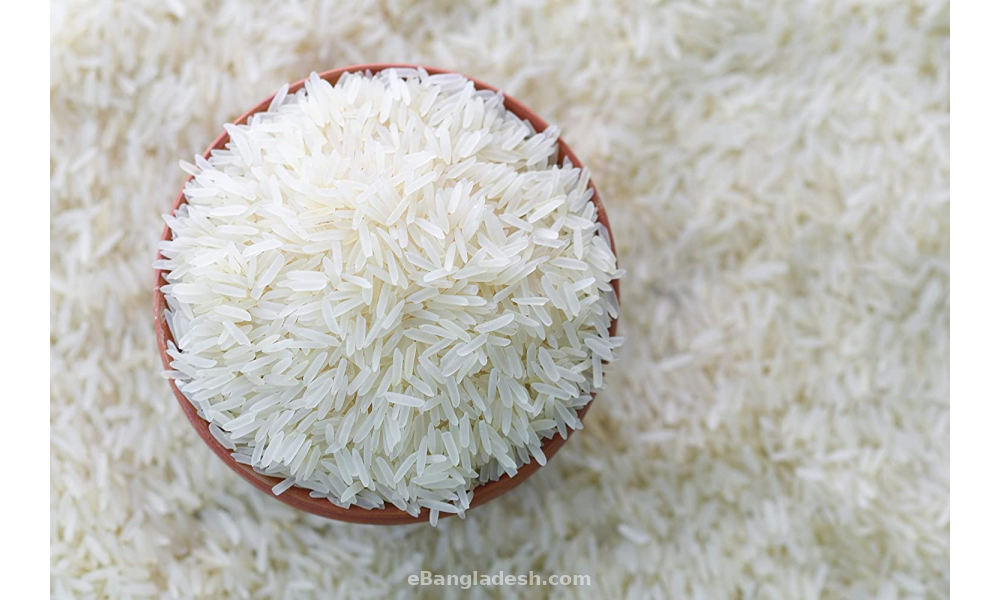
Kataribhog rice of Dinajpur is a traditional aromatic rice variety that is grown in the Dinajpur district of Bangladesh. It is known for its unique flavour, fragrance, and texture. Kataribhog rice was awarded Geographical Indication (GI) status in 2021, which means that it can only be grown and sold using the Kataribhog name if it is produced in the Dinajpur district.
Kataribhog rice is a medium-grain rice with a slightly elongated shape. It has a milky white colour and a delicate, nutty flavour. Kataribhog rice is also known for its high nutritional value. It is a good source of protein, fibre, and carbohydrates.
Kataribhog rice is a popular rice variety in Bangladesh and is often served on special occasions. It is also exported to other countries, including India, the United States, and the United Kingdom.
The GI status of Kataribhog rice has helped to protect the livelihoods of farmers in the Dinajpur district and to promote the rice variety to a wider audience. It has also helped to increase the market value of Kataribhog rice.
Here are some of the benefits of Kataribhog rice:
- It has a unique flavour, fragrance, and texture.
- It is a good source of protein, fibre, and carbohydrates.
- It is a popular rice variety in Bangladesh and is often served on special occasions.
- It is exported to other countries, including India, the United States, and the United Kingdom.
- The GI status of Kataribhog rice has helped to protect the livelihoods of farmers in the Dinajpur district and to promote the rice variety to a wider audience. It has also helped to increase the market value of Kataribhog rice.
White Clay of Bijoypur (Sada Mati)

White Clay of Bijoypur (Sada Mati) is a Geographical Indication (GI) product of Bangladesh. It is a unique type of clay that is found in the Bijoypur area of the Netrokona district. The clay is known for its purity, whiteness, and fine texture.
White Clay of Bijoypur has been used for centuries by the people of the region for a variety of purposes, including making pottery, cosmetics, and traditional medicines. In recent years, clay has also become popular in the industrial sector for use in the production of ceramics, paper, and pharmaceuticals.
The GI status of White Clay of Bijoypur was granted by the Department of Patents, Designs and Trademarks (DPDT) in 2021. This status recognizes the unique quality and reputation of the clay, and it protects it from counterfeiting and imitation.
The GI status of White Clay of Bijoypur is expected to benefit the people of the Bijoypur region in several ways. It is expected to increase the demand for the clay, which will lead to higher incomes for the people who mine and process it. The GI status is also expected to promote the cultural heritage of the region and attract more tourists.
Overall, the GI status of White Clay of Bijoypur is a positive development for the people of the Bijoypur region and Bangladesh as a whole. It will help to protect and promote this unique and valuable product.
Hilsa Fish as GI Product

The Hilsa fish, or Tenualosa Elisha, is a popular and tasty species that may be found in the rivers and Bay of Bengal. It’s not only a tasty treat in India and other nearby nations, but the national fish of Bangladesh as well.
The taste and texture of Hilsa fish are unparalleled. Its body is silvery with a blue shine, and its tail is lengthy and forked. White and flaky, the fish’s meat has a robust, oily taste.
Protein, omega-3 fats, and other elements may all be found in healthy amounts in Hilsa fish. Vitamin A, vitamin D, calcium, and phosphorus are just a few of the vitamins and minerals that it contains in plenty.
Many recipes from Bangladesh and India include Hilsa fish as a key component. Common preparations include grilling, frying, and currying. Drying or salting Hilsa fish is another option for long-term storage.
The World Intellectual Property Organization (WIPO) recognized Hilsa fish as a GI in 2017. This implies that only fish obtained in the Bay of Bengal or its rivers may legitimately be called Hilsa.
There are a variety of reasons why knowing the GI status of Hilsa fish is crucial. It aids in securing the future of Bangladeshi and Indian fishermen and aquaculturists. It also aids shoppers in spotting and buying genuine, high-quality Hilsa fish.
In sum, Hilsa fish is an integral element of Bangladeshi and Indian cuisine since it is both tasty and healthy. Having Hilsa fish recognized as a GI aids in safeguarding the incomes of fishermen and aquaculturists while also facilitating the acquisition of genuine, high-quality Hilsa fish by customers.
Bangladeshi Bagda Prawns
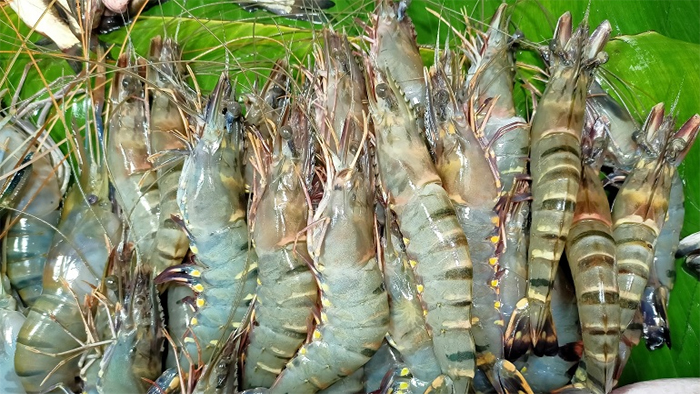
The coastal seas of Bangladesh are home to a unique kind of shrimp known as the Bangladeshi Bagda Prawn. The special conditions under which they develop give them their distinctive flavour and texture.
The Sundarbans mangroves, a UNESCO World Heritage Site, are a common location for farming Bagda Prawns. The shrimp are raised in a high-quality environment made possible by the mangroves’ role in filtering the water.
Bagda Prawns are a major source of income for Bangladesh because of their high demand both abroad and at home. They may be found in almost every biryani, kebab, and curry meal from Bangladesh.
Bagda Prawns from Bangladesh was recognized as a GI product in 2019. This limits the usage of the term “Bangladeshi Bagda Prawns” to just those shrimp that are raised in Bangladesh. This helps guarantee that customers are receiving a high-quality product and preserves the good name of Bangladeshi Bagda Prawns.
The Bagda Prawns of Bangladesh are an important part of the country’s economy and culture. Many farmers in Bangladesh rely on the sale of these tasty and healthy foods to supplement their income. The protection and promotion of Bangladeshi Bagda Prawns is made possible by their GI classification.
Khirsapati Mango of Chapainawabganj
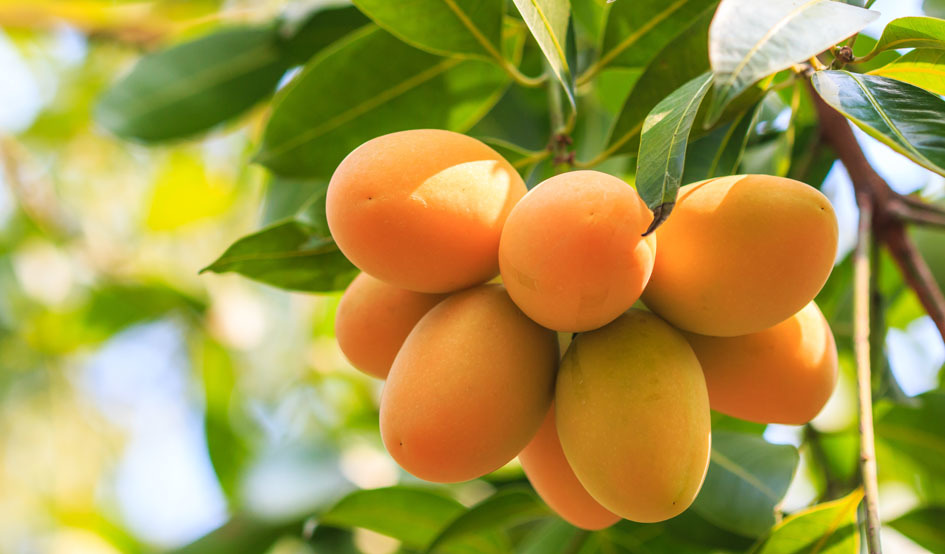
The Khirsapati mango of Chapainawabganj is a popular and delicious variety of mango that is grown in the Chapainawabganj district of Bangladesh. It is a large, oval-shaped mango with bright yellow skin and sweet, juicy flesh. The Khirsapati mango is known for its unique flavour, which is a combination of sweet and tart. It is also known for its high nutritional value, as it is a good source of vitamins A and C, potassium, and fibre.
The Khirsapati mango has been cultivated in the Chapainawabganj district for centuries. The region’s unique soil and climate conditions are ideal for growing this variety of mango. The Khirsapati mango is harvested in the summer months, and it is a popular fruit in Bangladesh and other countries in the region.
In 2019, the Khirsapati mango of Chapainawabganj was granted Geographical Indication (GI) status by the government of Bangladesh. This means that the Khirsapati mango is now officially recognized as a unique product of the Chapainawabganj district.
GI status is important for the Khirsapati mango because it helps to protect the product from counterfeiting and imitation. It also helps to promote the Khirsapati mango in the global market.
The Khirsapati mango of Chapainawabganj is a valuable product that contributes to the economy of the Chapainawabganj district and Bangladesh as a whole. It is also a delicious and nutritious fruit that is enjoyed by people all over the world.
Fazli Mango of Rajshahi & Chapainawabganj

Fazli mango of Chapainawabganj is a Geographical Indication (GI) product in Bangladesh. This means that it is a product that is produced or manufactured in a specific geographical area and has a unique quality or reputation that is attributable to that place.
Fazli mangoes are known for their large size, sweet taste, and juicy flesh. They are also rich in vitamins and minerals. Fazli mangoes are grown in the Chapainawabganj district of Bangladesh, which is located in the northwestern part of the country. The climate and soil conditions in Chapainawabganj are ideal for growing Fazli mangoes.
Fazli mangoes are a popular fruit in Bangladesh and are also exported to other countries. The GI status of Fazli mangoes of Chapainawabganj helps to protect the livelihoods of farmers in the region and to promote sustainable agriculture practices.
Here are some of the unique characteristics of Fazli mangoes of Chapainawabganj:
- Large size (average weight of 1.5-2 kg)
- Sweet taste
- Juicy flesh
- Rich in vitamins and minerals
- Grown in the Chapainawabganj district of Bangladesh, which has ideal climate and soil conditions for growing Fazli mangoes
The GI status of Fazli mangoes of Chapainawabganj is a valuable asset for the region and for the country as a whole. It helps to protect the livelihoods of farmers, to promote sustainable agriculture practices, and to preserve the cultural heritage of Bangladesh.
Black Bengal Goat Breed
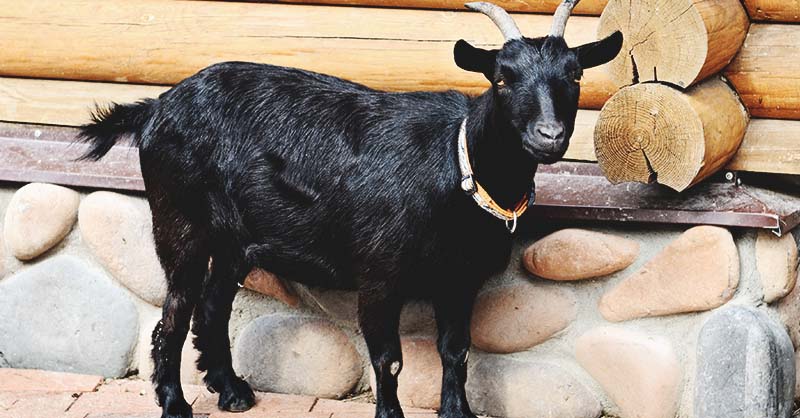
The Black Bengal goat breed is a unique and valuable breed of goat that is native to Bangladesh and West Bengal, India. It is a small to medium-sized goat with a black coat and a characteristic white stripe on its forehead. Black Bengal goats are known for their high-quality meat, which is tender and juicy. They are also known for their high reproductive rate and their ability to adapt to a variety of climates.
The Black Bengal goat breed is a Geographical Indication (GI) product. This means that the breed has been officially recognized as being unique to a specific geographical area. The GI status of the breed helps to protect its producers and to ensure that consumers are getting authentic Black Bengal goat products.
The Black Bengal goat breed is an important economic asset for many farmers in Bangladesh and West Bengal, India. The sale of Black Bengal goats and their products provides a significant source of income for many families. The breed also plays an important role in the cultural heritage of the region.
Black Bengal goat meat is a popular dish in Bangladesh and West Bengal, India. It is also exported to other countries, including the United States, Canada, and the United Arab Emirates.
The Black Bengal goat breed is a valuable asset for Bangladesh and West Bengal, India. It is a unique and productive breed that plays an important economic and cultural role in the region.
Here are some of the benefits of the GI status for the Black Bengal goat breed:
- Protection from counterfeiting and imitation
- Increased market recognition and value of the breed
- Increased demand for the breed
- Promotion of the cultural heritage of the region
The GI status of the Black Bengal goat breed is an important step towards protecting and promoting this unique and valuable breed.
Shitalpati as Geographical Indication Product
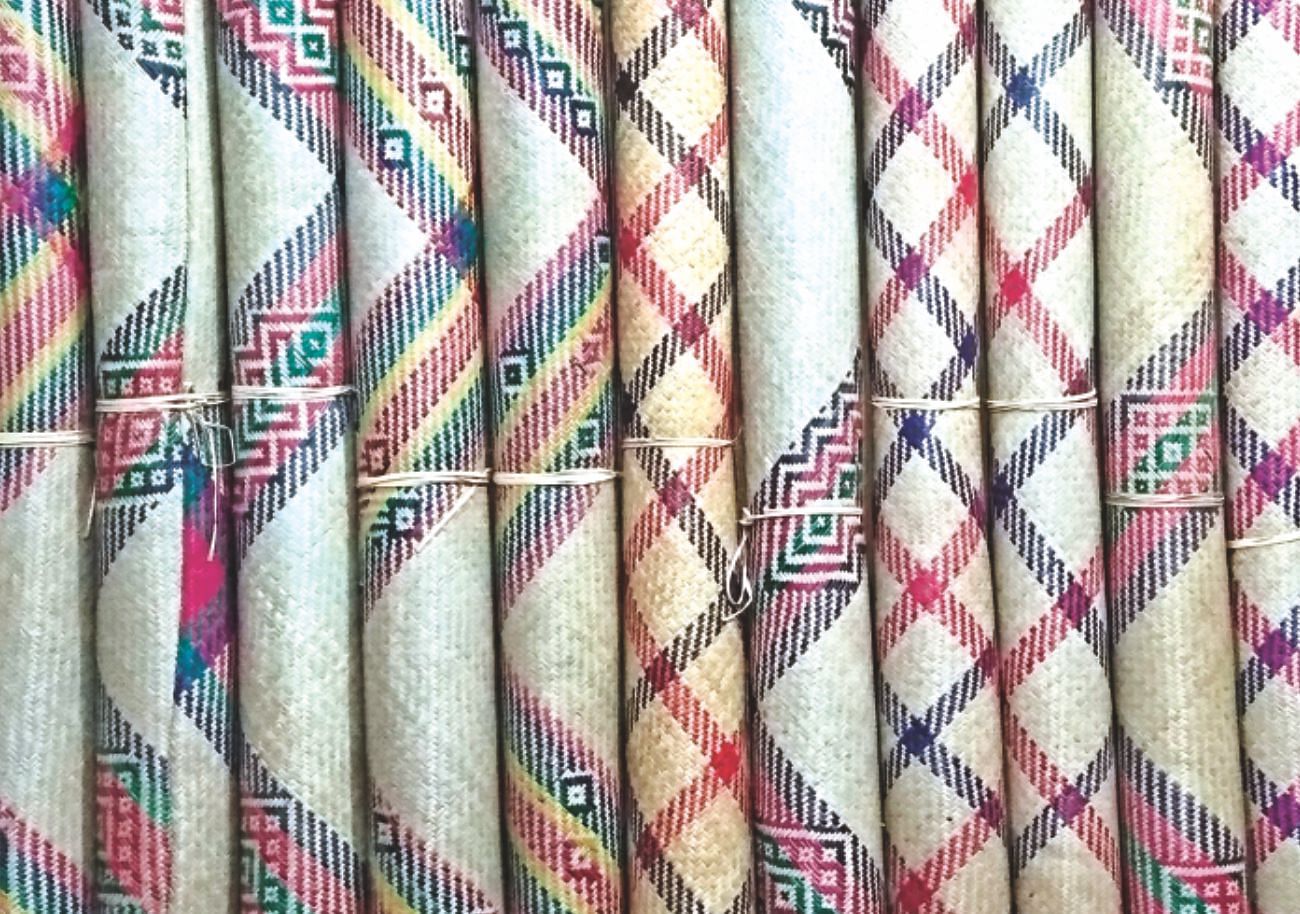
Shitalpati, a traditional Bangladeshi handwoven mat made from the reeds of the murta plant, has been granted Geographical Indication (GI) status. This means that only Shitalpati made in Bangladesh can be labelled and sold as such.
Shitalpati is known for its cooling and comfortable properties, making it ideal for use in hot climates. It is also a durable and long-lasting product. Shitalpati is typically used as a sleeping mat, but it can also be used as a rug, floor mat, or even a wall hanging.
The GI status of Shitalpati is a significant achievement for Bangladeshi artisans and producers. It will help to protect the livelihoods of those who make Shitalpati and ensure that consumers can purchase authentic Shitalpati products.
The GI status will also help to promote Shitalpati to a wider audience and increase its export potential. Shitalpati is a beautiful and unique product that has the potential to become a global brand.
Here are some of the benefits of GI status for Shitalpati:
- Increased market recognition and value of the product
- Protection against counterfeiting and imitation
- Increased demand for the product
- Promotion of the cultural heritage of Bangladesh
The GI status of Shitalpati is a welcome development for the Bangladeshi economy and for the artisans who produce this unique and beautiful product.
Ashwina Mango of Chapainawabganj

Ashwina Mango of Chapainawabganj is a Geographical Indication (GI) product of Bangladesh. This means that it is a unique product that is specific to the Chapainawabganj region of Bangladesh.
Ashwina Mangoes are known for their delicious taste, sweet flavour, and juicy texture. They have thin skin and a golden-yellow colour. Ashwina Mangoes are typically harvested in the summer months, from May to June.
The unique qualities of Ashwina Mangoes are due to the specific geographical conditions of the Chapainawabganj region. The region has sandy loam soil and a warm climate, which are ideal for growing mangoes.
Ashwina Mangoes are a popular fruit in Bangladesh and are also exported to other countries. They are used in a variety of dishes, including fresh fruit salads, desserts, and smoothies.
Ashwina Mangoes are a valuable economic asset to the Chapainawabganj region. They provide employment and income for farmers and other people involved in the mango industry.
The GI status of Ashwina Mangoes helps to protect the product from counterfeiting and imitation. It also helps to promote the product and raise its market value.
Overall, the Ashwina Mango of Chapainawabganj is a unique and valuable product that is an important part of the cultural and economic heritage of Bangladesh.
Langra Mango of Chapainawabganj

Langra mango of Chapainawabganj is a Geographical Indication (GI) product, meaning that it is a unique product that is produced in a specific geographical area and has a quality or reputation that is attributable to that place.
Langra mangoes are known for their sweet and juicy flesh, and their thin, greenish-yellow skin. They are also relatively large in size, and can weigh up to 1 kg each. Langra mangoes are typically harvested from April to June.
Chapainawabganj district in northwestern Bangladesh is the largest producer of Langra mangoes in the country. The unique soil and climatic conditions of Chapainawabganj are ideal for growing Langra mangoes.
Langra mangoes are a popular fruit in Bangladesh and other parts of South Asia. They are eaten fresh, used in juices and smoothies, and also used to make a variety of desserts, such as mango lassi and mango kulfi.
The GI status of Langra mango of Chapainawabganj helps to protect the livelihoods of farmers in Chapainawabganj, and it also promotes sustainable agriculture and production practices. It also helps consumers to identify and purchase authentic Langra mangoes of high quality.
Here are some of the benefits of the GI status of Langra mango of Chapainawabganj:
- Farmers in Chapainawabganj can get a higher price for their Langra mangoes, as the GI status helps to distinguish them from other mangoes in the market.
- Consumers can be sure that they are buying authentic Langra mangoes of high quality.
- The GI status helps to promote the cultural heritage of Chapainawabganj district.
Overall, the GI status of the Langra mango of Chapainawabganj is a positive development for both farmers and consumers.
Kachagolla of Natore

Kachagolla of Natore, a traditional Bangladeshi sweet, has been granted Geographical Indication (GI) status by the Department of Patents, Designs and Trademarks (DPDT). This makes it the 17th GI product of Bangladesh.
Kachagolla is a soft, spongy sweet made from milk and sugar. It is made by boiling milk until it thickens, and then adding sugar and simmering until the mixture forms a thick syrup. The syrup is then poured into small moulds and allowed to cool and set.
Kachagolla is known for its unique flavour and texture. It is soft and spongy, with a slightly sweet and milky flavour. It is also very perishable and must be eaten within a few days of being made.
Kachagolla is a popular sweet in Bangladesh and is especially popular in the Natore district. It is often served as a dessert or snack and is also used as an ingredient in other sweets.
The GI status of Kachagolla of Natore will help to protect the product from counterfeiting and imitation. It will also help to promote the product and increase its market value.
Overall, the GI status of Kachagolla of Natore is a positive development for the traditional Bangladeshi sweet. It will help to protect the product, promote it, and increase its market value.
Tulsimala Rice of Sherpur

Tulsimala Rice of Sherpur is a Geographical Indication (GI) product, meaning that it is a unique rice variety that is grown and produced in the Sherpur district of Bangladesh. Tulsimala rice is known for its distinctive flavour, aroma, and texture. It is also a good source of nutrients, including vitamins, minerals, and fibre.
Tulsimala rice is grown in a specific geographical area of Sherpur district, where the soil and climatic conditions are ideal for its production. The rice is cultivated using traditional methods and is harvested by hand. After harvesting, the rice is milled and polished using traditional methods.
Tulsimala rice has a long history and is a popular rice variety in Bangladesh. It is often used to make special dishes, such as biryani and pulao. Tulsimala rice is also exported to other countries, where it is prized for its unique flavour and quality.
The GI status of Tulsimala rice protects it from counterfeiting and imitation. It also helps to promote the rice in the global market. The GI status also benefits the farmers of Sherpur district, as it ensures that they receive a fair price for their rice.
Tulsimala Rice of Sherpur is a valuable GI product that reflects the rich culture and heritage of Bangladesh. It is a unique rice variety with a distinctive flavour, aroma, and texture. Tulsimala rice is also a good source of nutrients and is popular in both Bangladesh and other countries around the world.
Curd of Bogra (Doi)
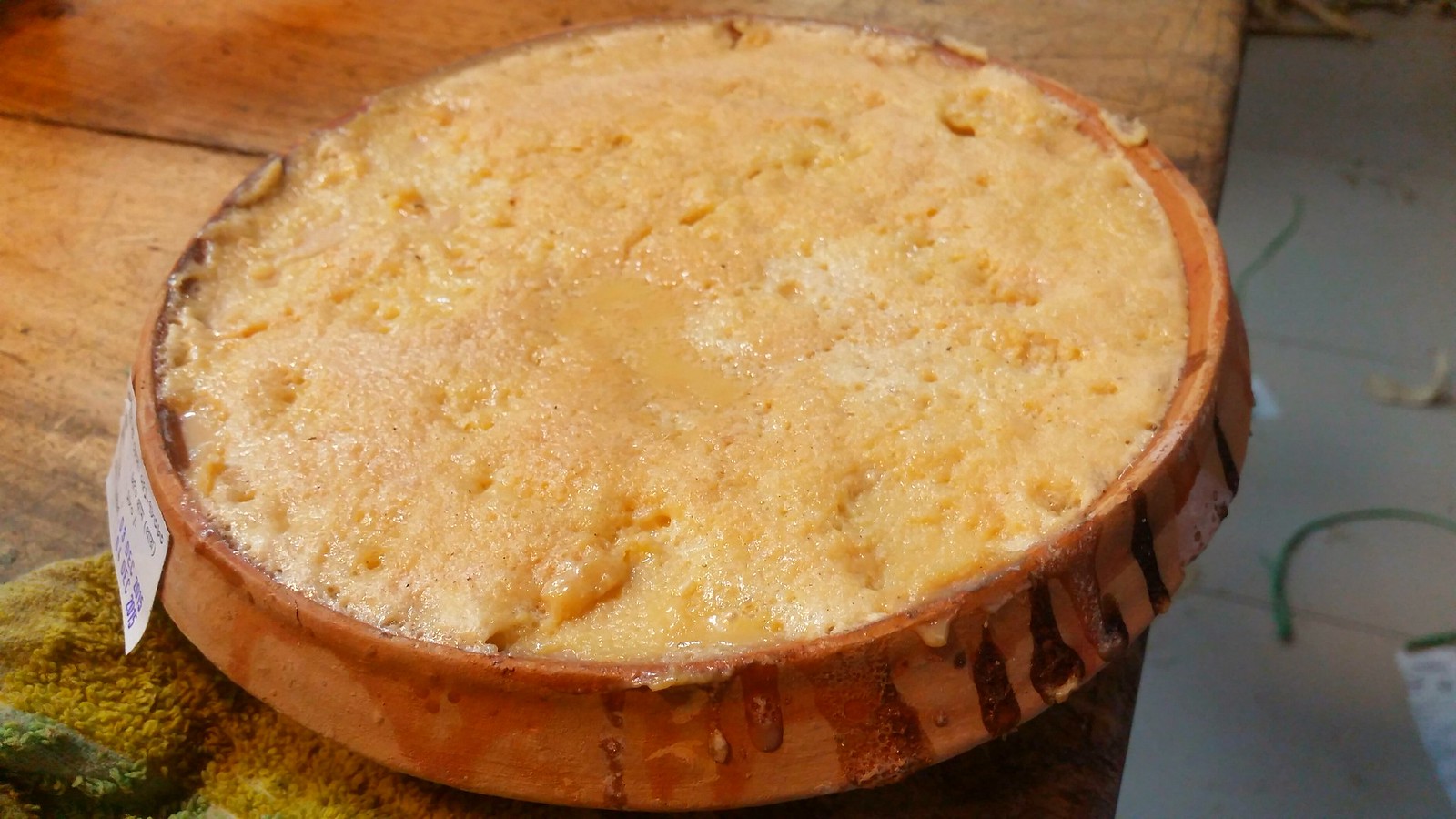
Curd of Bogra (Doi) is a traditional Bangladeshi yoghurt that has been granted Geographical Indication (GI) status. This means that Curd of Bogra is a unique product that has a specific quality or reputation that is attributable to its geographical origin.
Curd of Bogra is made from high-quality milk and a special starter culture. It is fermented in a traditional earthen pot called a “matka”. This fermentation process gives Curd of Bogra its unique flavour and texture.
Curd of Bogra is a popular food in Bangladesh and is often eaten with rice or bread. It is also used in a variety of dishes, such as lassi, raita, and desserts.
Curd of Bogra is a nutritious food that is high in protein, calcium, and other essential nutrients. It is also a good source of probiotics, which are beneficial bacteria that are good for gut health.
The GI status of Curd of Bogra is a significant recognition of the unique quality and reputation of this product. It is also a testament to the traditional skills and knowledge of the people of Bogra who produce Curd of Bogra.
The GI status of Curd of Bogra is expected to boost its exports and promote its cultural heritage. It will also help to protect the livelihoods of the people who produce Curd of Bogra.
It’s important to remember that GI recognition may do wonders for a product’s brand awareness. This might lead to a rise in demand, output, employment, and related metrics. The value of a nation’s exports cannot be overstated. The prosperity of a nation increases when more of its goods are granted GI status. A product’s worth increases when the GI label indicates that it is among the best of its type in the nation. Gaining GI classification would increase the value of Bangladeshi exports and help promote the country more effectively in global markets. The experts agree that GI goods may do wonders for promoting Bangladesh internationally. However, there has been no noticeable rise in exports of the 11 items that were accorded GI certification earlier.
See more similar latest news on the Newsfeed Page.
References:
All 18 GI Products:
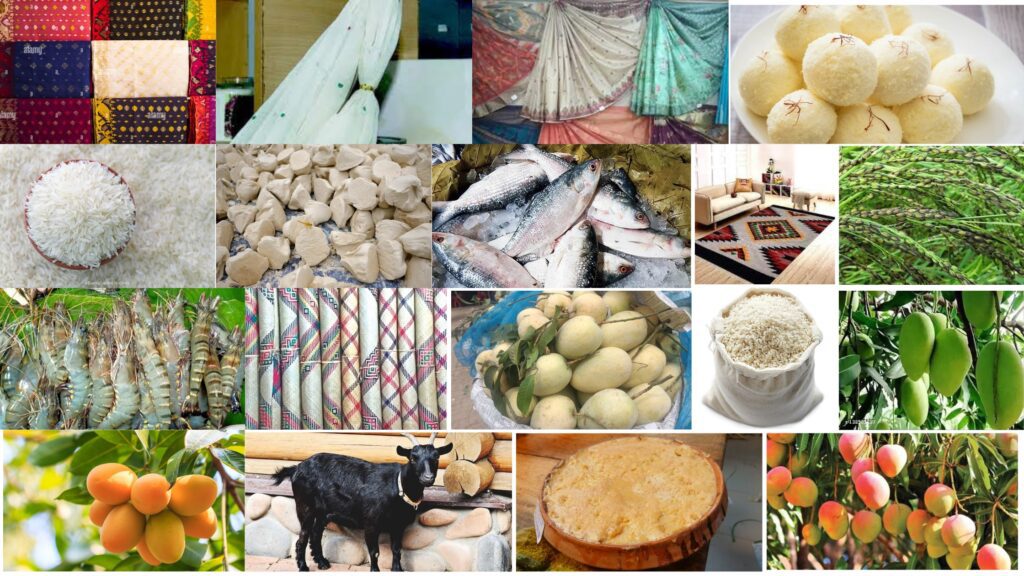

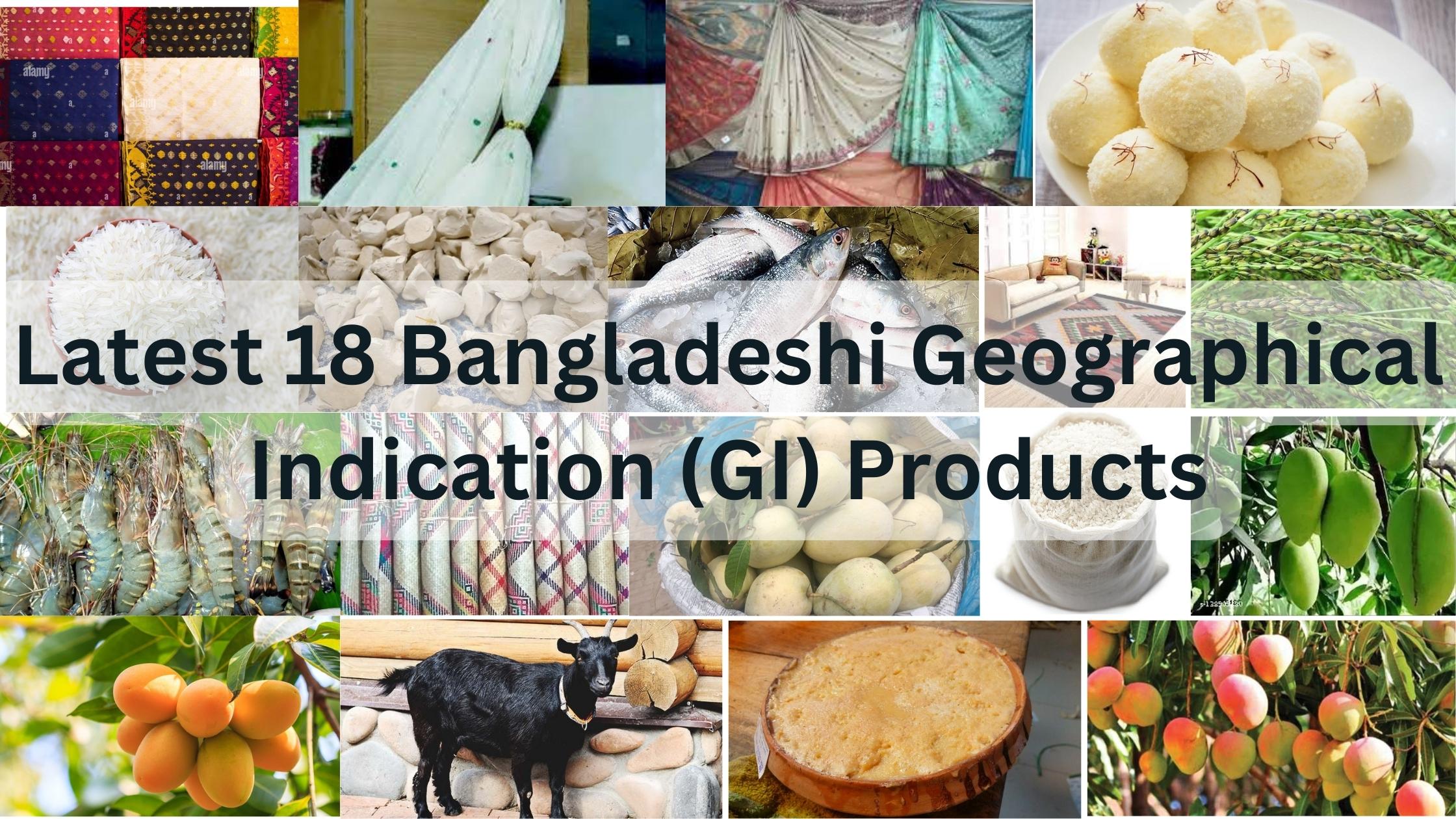
ভাইয়াদের কাজ আসলেই দারুন,অনেক জ্বালাইছি,তাও খুব সুন্দর ভাবে কাজ করে দিছে,সাথে অনেক তথ্য দিয়েও সহায়তা করেছে।সবাই তাদের থেকে সিভি করিয়ে নিতে পারেন।